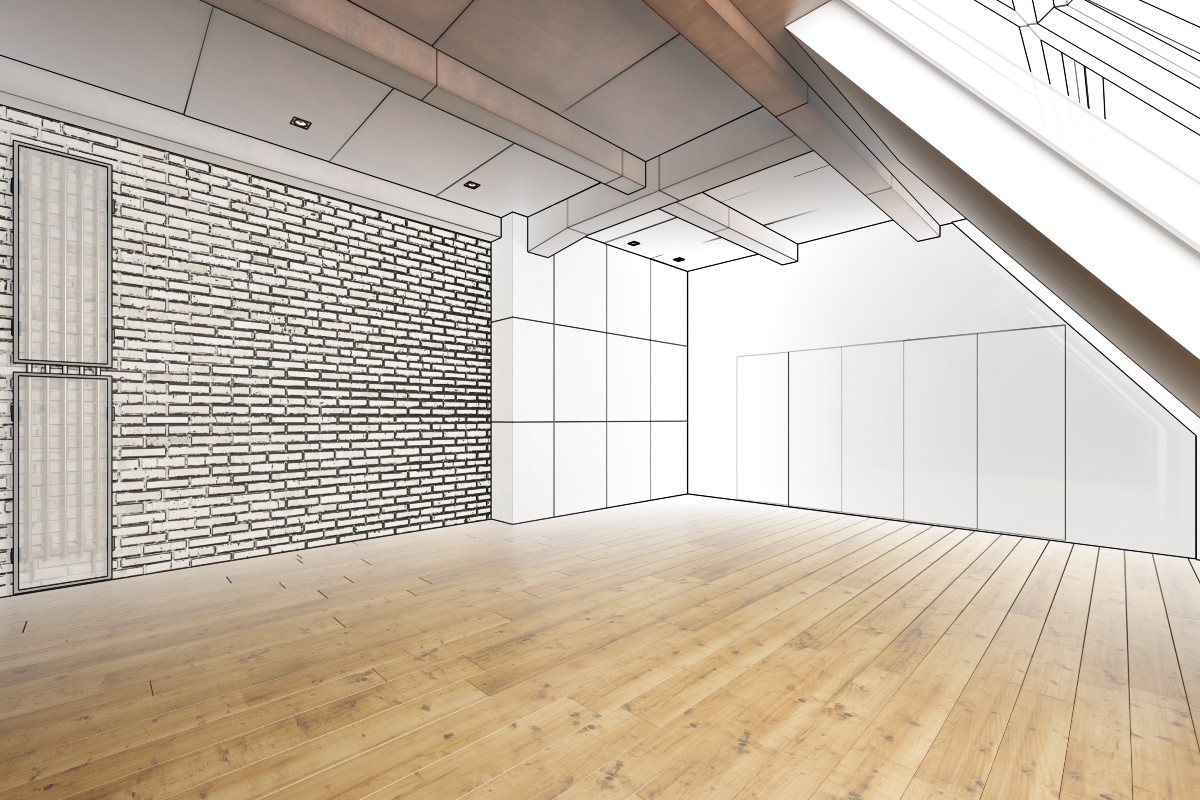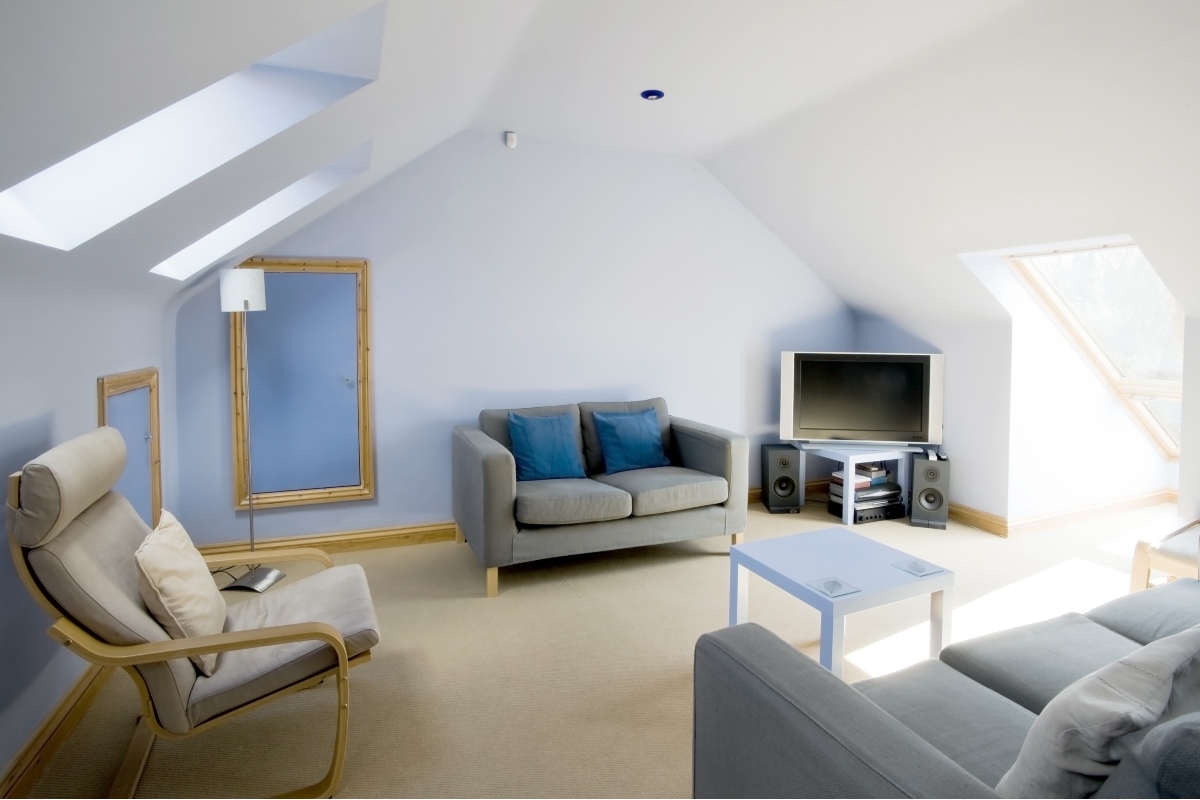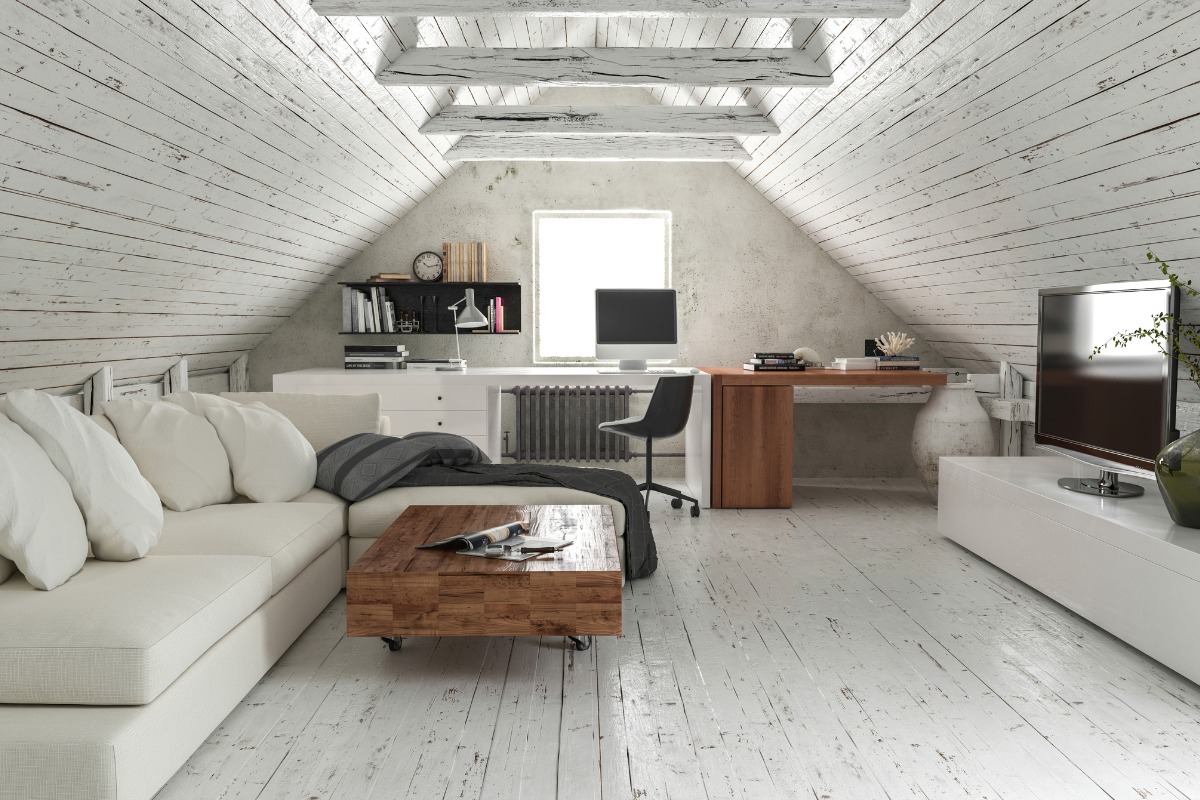A loft conversion is one of the most rewarding ways to create more space in your home. Whether you want an extra bedroom, a home office or a peaceful living space tucked away from the busier parts of the house, converting the...
Loft Conversion on a Budget: How to Save Money Without Compromising Quality
- Kitchen
- |
- October 10, 2025

When you need more space but don’t want to move house, the decision often comes down to adding a house extension or converting the loft. A loft conversion can be a smart choice — and it is certainly possible to carry out your loft conversion project without breaking the bank or compromising on quality

What is a loft conversion, and why it’s worth considering
Converting an existing attic or roof space into a useful room is known as a loft conversion (also referred to as an attic conversion). You take what was previously unused or underutilised under the sloping roof of your home and turn it into living space: a new bedroom, bathroom, home office, playroom, storage area, or a combination of these. Many homeowners find that a loft conversion gives more value per pound spent than many other home improvements.
Extension vs loft conversion: what’s the difference?
An extension adds outward — you build out from your house footprint into your garden or side. A loft conversion adds upward — you use the unused volume inside your roof, rather than extending into the garden. Because loft conversions are internal and utilise existing floor space, they can sometimes avoid the need for full planning permission or be simpler in certain respects; however, they are still regulated and require approval under building regulations.
Why choose a loft conversion over an extension (in many cases)
Choosing a loft conversion often means a reduced impact on your garden or plot footprint, allowing you to retain more outside space. It can be less disruptive: many homeowners may remain in their house during building work, as compared to large extensions. A well-done loft conversion can add significant value to your property. Many loft conversion designs qualify under permitted development, meaning you may not always have to apply for full planning permission (depending on local rules and design).
Common types of loft conversion
Roof-light (Velux) / rooflight loft conversion
A relatively straightforward option: you don’t radically change the shape of the roof; you install roof windows, reinforce or adapt floor joists, add insulation, access, electrics, etc. This option often involves minimal structural alterations to the existing roof slope or roof shape and is usually the most cost-effective way to create a usable loft room, provided there is sufficient head height.
Dormer loft conversion
Probably the most common type: you build out from the sloped roof to create extra vertical wall and floor space, and insert dormer windows. Dormer conversions give good usable space and head height and work well for many house types (terraced, semi-detached, detached).
Hip-to-gable loft conversion
Ideal when your house has a hipped roof: you convert the hip into a vertical gable, giving more internal space. Often this is combined with other features to maximise usable volume. It may affect external appearance, so you should check whether planning is required.
Mansard loft conversion
More ambitious: it involves altering the roof so that one wall is very steep (nearly vertical), often with a flat roof on top and windows built into the new roof structure. This type frequently gives the biggest increase in floor space, including good head height wall to wall—but it tends to be more expensive, more complex, and often requires planning permission.
Modular/off-site loft conversion
Some companies offer modular or prefabricated loft modules. Portions of the work are done off-site, then installed. These schemes can shorten on-site times and reduce some disruption. They may or may not save a significant amount of cost, depending on the complexity, transportation, quality, and finish.
What affects the cost of a loft conversion
Size and scale
The bigger the usable space you want, the higher the cost. Smaller rooms cost less; large suites cost more.
Type of conversion
Rooflight is the most cost-effective option; a dormer adds to the cost; a hip-to-gable conversion adds more; a mansard is among the costliest.
Structural alterations & roof work
Whether your existing roof structure needs significant modification, whether your existing ceiling joists or floor joists are adequate, whether steel beams are needed, whether load-bearing walls must be reinforced, fire safety and sound insulation, or the complexity of access & staircases.
Permissions and legal/regulatory requirements
You may be able to work under permitted development rights, but you may still need planning permission. Building regulations approval is almost always required. Party Wall matters may apply, and you may need to enter into formal agreements. The cost of architectural, structural engineer, surveyor fees, planning (if needed), and building control all add up.
Finishes, materials, fittings
Quality of windows, doors, staircases, lighting, floors, decoration, bathroom/kitchen fittings; insulation, energy efficiency, heating; labour and material costs; regional differences.
Location & property age
Condition of the house; whether you need extra remedial work; whether your property is terraced houses, semi-detached, detached, older or newer; what your roof type is, what your roof pitch is, and what your existing roof looks like.
Loft conversion cost: typical UK ranges
Basic rooflight loft conversions often start from £20,000 to £40,000 for small-to-medium-sized homes. Medium to larger homes: £30,000 to £60,000 or more, depending on specification. Some projects (especially involving structural change) may rise to £70,000 or above. As a guide, a 30 m² conversion might cost from around £27,500 to £75,000 or more, depending on complexity. The cost per square metre varies with quality, region, and level of finish. Labour and material costs form a big portion of the cost, so managing specifications and avoiding unnecessary extras helps save money.

How to save money without compromising quality
Choose the most straightforward conversion that meets your needs
If you don’t need lots of extra floor space, a rooflight conversion may suffice. Only add dormers, hip-to-gable, or mansard if your space demands it.
Fix the scope from the start
Changing your mind mid-build adds cost and time. Stick to a clear plan. Get a good loft conversion design up front.
Work with a good professional loft conversion specialist
Get several quotes. Ask what is included (structure, insulation, stairs, finishing, windows, plumbing, electrics, planning/regulation). Ensure they understand all relevant rules (building regulations, permitted development, fire safety, etc.). A good specialist can help you avoid costly mistakes, suggest efficient designs, and manage compliance.
Prioritise structural and regulatory essentials, soften or economise on “extras”
Focus on core structure, insulation, access, safety, and basic finish. Then choose cost-effective finishes for flooring, lighting, and decoration. You can save on high-end features if they are not essential.
Consider shell-only conversion (if you are handy)
One way to save is to do the structural shell first (roof, stairs, floor, bare walls, windows, weatherproofing), then finish the interior over time or by separate trades. Be cautious: only do tasks you are competent at; mistakes can cost more in corrections than the savings.
Use the right materials
Sound insulation, airtightness, and quality windows matter for comfort and energy bills — it's not just aesthetics. Be realistic, but don’t compromise on safety, comfort, and durability. Reuse or source cost-effective materials where possible (within code).
Be smart about permissions
Check whether your conversion needs full planning permission or qualifies under permitted development. You may still need building regulations approval to ensure safety, ventilation, insulation, fire safety, and other relevant aspects. Don’t skip legal formalities; non-compliance can lead to enforcement, extra costs, or problems when selling.
Planning & design considerations
Head height
You typically need a reasonable central head height (often around 2.25 m or more) in the loft to make it usable and comfortable. If your existing roof's slope or ridgeline is low, your options may be restricted without significant structural alteration.
Natural light
Using roof windows or dormer windows helps bring in natural light, making the space feel more open. Be mindful of window size, placement, and glazing specification to balance cost, view, heat, and ventilation.
Roof and ceiling structure
You need to inspect the roof structure (rafters, purlins, ridge, etc.) and determine whether the existing roof and ceiling can support the altered loads. You may need to strengthen or modify the existing roof structure. Check whether your existing ceiling joists or floor joists are adequate. Sometimes, new floor joists are required to support a new floor, ensuring compliance with structural and safety codes. Consider the best method for insulation (warm roof, cold roof, etc.) depending on the roof design and climate.
Fire safety & sound insulation
Your loft conversion will need to meet fire safety regulations, including escape routes, fire resistance, and fire-protected stair enclosures. Sound insulation (between floors/rooms) may also be required. Ensure compliance with relevant building regulations and building control inspections.
Layout & usable space
Plan the layout to make the best use of usable space: consider built-in storage, wardrobes, eaves units, the orientation of stairs, light entry, and egress window openings. Consider what you want: extra bedrooms, bathrooms, a home office, a playroom, or a storage space. The more complex, the higher the cost — so balance need vs budget. Avoid over-building or over-specifying if not needed.
When planning permission might be needed
If your loft conversion is quite large or significantly changes the roof shape, front, or ridgeline, local authorities may require you to apply for permission. Some designs fall under permitted development rights, but you’ll need to check with your local council. Conservation areas, listed buildings, or houses in special zones may have stricter rules; in some cases, you might need a Lawful Development Certificate to confirm your status.
Comparing cost vs value
A loft conversion generally adds value to your home, sometimes significantly; well-designed conversions can return more than the cost over time. The amount of value added depends on the quality of your finish, design, how well it integrates with the rest of the home, and local market preferences. Because a loft conversion often costs less per square metre (than some extensions) and uses existing space, it can offer very good value.
Summary: What to do next
-
Evaluate how much space you really need (bedroom(s), bathroom, office, playroom, etc.).
-
Check your loft: consider head height, existing roof slope, condition, and determine if any structural alterations are needed.
-
Consider the simplest option first (a rooflight), then more ambitious options if needed (such as a dormer, hip-to-gable, etc.).
-
Obtain multiple quotes from reputable loft conversion specialists, along with detailed breakdowns.
-
Clarify all permissions and regulatory requirements (planning, permitted development, building regulations, party wall, etc.).
-
Plan your budget, allowing for core construction, safety, finishing, and a contingency.
-
Prioritise quality in structure and safety; save on non-essentials rather than essentials that affect comfort or durability.
Conclusion
A loft conversion can be one of the most cost-effective ways to add extra space in your home, without the disruption and footprint effects of a significant extension. Done well, it increases your usable floor space, improves natural light, and adds value to your property, all while being achieved without compromising on quality if you plan carefully, work with skilled professionals, and select the right design for your property and needs.
If you like, I can also prepare loft conversion ideas with approximate cost breakdowns (based on property type, size, etc.), so you can see what your budget might realistically achieve.
The Conversion Guy – Expert Loft Conversions in Derbyshire & Staffordshire
Are you ready to take the plunge and turn your unused loft into a beautiful, practical space? Well, look no further! The Conversion Guy is committed to delivering a loft conversion experience that is second to none.
With over 40 years of experience in loft conversions, we are looking forward to helping you transform your unused space into something truly special! We love talking lofts, so be sure to get in touch today or book a free consultation and take the first step towards unlocking your home’s full potential.
From the Learning Centre
Explore our resources and learn about pricing, bathroom refits, kitchen kitchen renovations, loft conversions and many other home improvements in our Learning Centre







